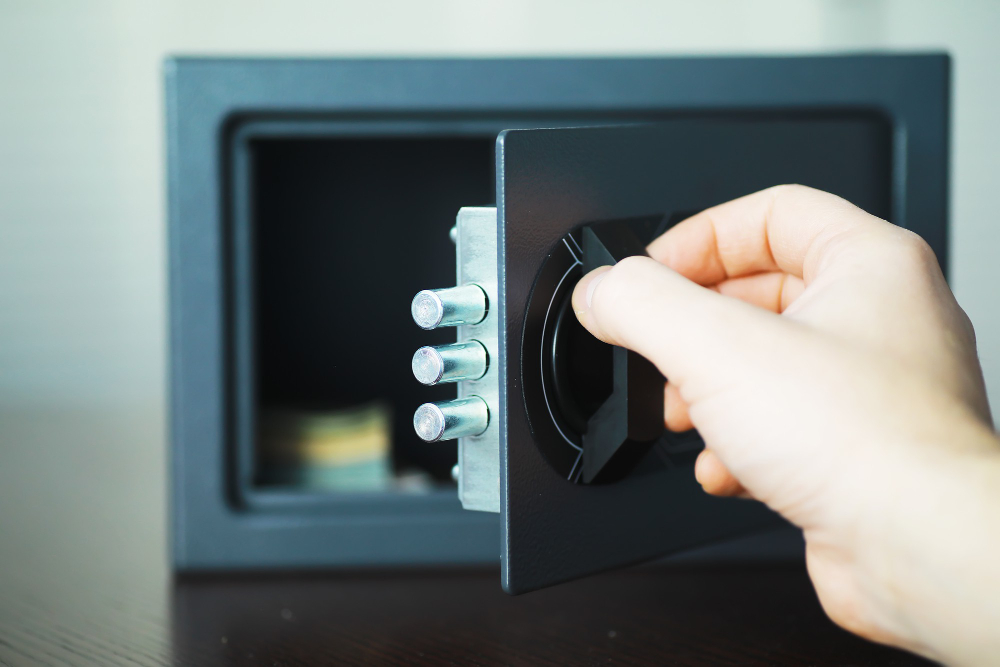
Safes are designed to be impenetrable fortresses for your most valuable possessions. But what happens when you can't get into your own safe? Whether you've forgotten the combination, lost the key, or the lock is malfunctioning, being locked out can be a stressful experience.
This guide will walk you through the proper methods for opening a safe. We will explore different types of safe locks and provide step-by-step instructions for each. We'll also cover what to do when DIY methods fail and you need professional help. Understanding these techniques can help you regain access to your belongings without causing unnecessary damage to your safe.
Before you can attempt to open a safe, you need to identify the type of lock you're dealing with. The three most common types are combination locks, electronic locks, and key locks. Each requires a different approach.
The classic combination lock, often seen in movies, is a dial lock that requires a specific sequence of numbers to open. These locks are known for their reliability and don't depend on batteries or external power.
How They Work:
A combination lock consists of a dial on the outside and a wheel pack on the inside. The wheel pack is a set of wheels with notches. When you turn the dial to the correct numbers in the correct sequence, all the notches on the wheels align. This alignment allows the fence to drop into the notches, which in turn retracts the bolt and unlocks the safe.
Electronic keypad locks have become increasingly popular due to their convenience. Instead of a dial, they feature a numeric keypad where you enter a personal identification number (PIN).
How They Work:
When you enter the correct code, an internal circuit board sends a signal to a solenoid. The solenoid then retracts the locking bolt, allowing the safe to be opened. These locks are powered by batteries, which typically need to be replaced every year or two. Many models will have an indicator to let you know when the battery is low. Some also have a backup key in case of battery failure.
The simplest of the three, a key lock operates just like any standard lock. It requires a specific key to unlock the mechanism. These are often found on smaller, less expensive safes or as a secondary lock on safes with combination or electronic systems.
How They Work:
Inserting the correct key into the lock cylinder and turning it will align a series of pins or tumblers. Once aligned, the lock mechanism can be turned, which retracts the bolt and opens the safe door.
Now that you know the type of lock you have, let's go through the steps for opening it. Remember to be patient and precise, as a small mistake can require you to start the process over.
Opening a dial combination safe requires precision. If you make a mistake, you must start from the beginning.
If the safe doesn't open, start the process again. Be meticulous with your turns and ensure you are stopping precisely on each number.
Electronic safes are generally easier to open, provided you have the code and the batteries are working.
If the code is incorrect, you'll usually hear a different tone or see a red light. If the keypad is unresponsive, the batteries are likely dead. Look for an external battery contact point or a backup keyhole.
This is the most straightforward process.
If the key won't turn, try wiggling it gently. The lock mechanism might be stiff. Applying a small amount of graphite lubricant can sometimes help, but be careful not to use too much.
Sometimes, despite your best efforts, a safe just won't open. This can happen if the lock is broken, the internal mechanism is jammed, or you simply don't have the key or combination. In these situations, it's time to call a professional locksmith.
Attempting to force a safe open yourself can cause irreparable damage. Drilling, prying, or using a hammer can destroy the lock, the door, and even the contents inside. A professional locksmith specializing in safe opening has the tools and expertise to open your safe with minimal to no damage.
Here are some scenarios where professional help is necessary:
For residents in Orlando, FL, finding a reliable locksmith is crucial. A professional will use specialized techniques like lock scoping and manipulation to bypass the lock without destroying the safe.
Safes are essential for protecting your valuables, but they can be a source of major frustration when they don't work correctly. By understanding your safe's lock type and following the proper opening procedures, you can often regain access on your own. However, know your limits. When a safe refuses to cooperate, forcing it is never the answer. The best course of action is to contact a professional.
If you need professional safe opening in Orlando, FL, contact A-Rudi Cuellar Lock Co. today for more information. Our experienced technicians can help you access your safe quickly and without causing damage.